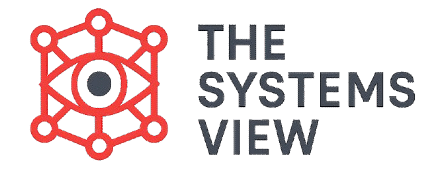If you want to understand why a society resists new ideas or why traditions seem impossible to change, you need to see the culture as a living, self-regulating machine. This systemic view was pioneered by Margaret Mead (1901–1978), a famous anthropologist who applied the rules of Cybernetics to human society.
Mead was a core member of the Macy Conferences, where she translated the abstract concepts of control and feedback into the messy world of human custom. Her work showed that a culture is not a random collection of habits. It is a powerful, goal-seeking system that uses feedback loops to maintain its own stability and identity.
This systemic stability, or the fight to keep things the same, is called cultural homeostasis. It proves that any effort to change a society must first overcome its incredibly strong, built-in controls.
1. The Core Mechanism of Cultural Homeostasis
Mead’s greatest contribution was proving that the same negative feedback loop that stabilizes a thermostat also stabilizes a society. The goal of the system is to maintain the current, familiar social order (the cultural norm).
Tradition as Negative Feedback
In a culture, traditions, customs, and taboos act as the primary forms of negative feedback.
- Deviation (Error Signal): An individual acts in a way that goes against the cultural norm (e.g., questions a custom, dresses unusually, adopts a radical new idea). This action is the error signal that pushes the system away from its goal.
- Correction (Social Pressure): The system reacts with social pressure, disapproval, gossip, or even ridicule. This is the corrective action designed to push the individual back into the acceptable range of behavior.
This continuous, self-correcting process is the engine of cultural homeostasis. It ensures that the collective system resists deviation and constantly returns to its established state of equilibrium.
Resistance is Systemic, Not Personal
This cybernetic view explains why traditions are so stubborn. The resistance to change is not personal laziness. It is the system functioning perfectly. When a person tries to introduce change, they are fighting the entire organized network of balancing loops that define the culture.
2. The Systemic Flow of Cultural Learning
Mead further showed that a culture’s ability to change depends entirely on the direction of its information flow. She identified three main types of culture based on which generation holds the control over knowledge.
Post-Figurative Culture
In this type of culture, the main flow of information and authority is from the past to the future.
- Flow: The young primarily learn from the elders. Knowledge, custom, and moral authority flow downward.
- Systemic View: This system is highly stable and fiercely resistant to change. The negative feedback loops (traditions) are powerful because they are reinforced by all older generations, ensuring the culture stays close to its historic goal state.
Co-Figurative Culture
This culture emerges in times of rapid social upheaval, such as war or mass immigration. The authority of the past breaks down.
- Flow: The main flow of learning becomes peer-to-peer. Children and adults learn primarily from their contemporaries (people their own age).
- Systemic View: The balancing forces weaken, and the culture becomes more dynamic and adaptable. Since no single group holds the full control, new patterns and customs can spread quickly horizontally.
Pre-Figurative Culture
This is the type of culture Mead believed the modern, rapidly changing world was moving toward.
- Flow: The flow of knowledge reverses. Elders and parents must learn from their children, especially concerning technology, digital literacy, and new social realities.
- Systemic View: This is a highly unstable system. The old balancing loops (tradition) lose their power because the newest, most relevant information comes from the future (the younger generation). This structural reversal leads to high societal anxiety and constant, confusing change.
3. Change Requires Reorganizing the System
For systems thinkers, changing a culture is not about arguing with people; it is about changing the feedback structure itself.
The Role of Reinforcing Loops
For a culture to change quickly, a powerful reinforcing loop (positive feedback) must be introduced that overrides the powerful stability of the negative loops.
- Example: If adopting a new technology creates a massive, visible economic benefit (a reinforcing loop), the cultural resistance (the balancing loop) to that change will eventually collapse under the weight of the economic gain.
The Power of Metacommunication
Gregory Bateson’s work on communication in culture also highlights the importance of discussing the culture’s rules. To change the system, you must be able to step outside the system and comment on the rules that govern it. This act of metacommunication is the first step toward intentionally reorganizing the cultural system.
The Key Insight: Margaret Mead showed that culture is a powerful control system designed to be stable. All lasting cultural change requires either directly weakening the system’s strong negative feedback loops or introducing a stronger, sustained positive feedback loop that makes the old way of life unsustainable.
Conclusion
Cultural feedback is the process by which societies maintain their identity and resist deviation. Margaret Mead provided a brilliant cybernetic framework by viewing tradition and social pressure as essential negative feedback mechanisms that drive cultural homeostasis. By mapping the flow of information across generations (Post-, Co-, and Pre-Figurative Cultures), she gave us the tools to understand why some societies remain rigid and why others are caught in a constant, anxious state of unpredictable change.



